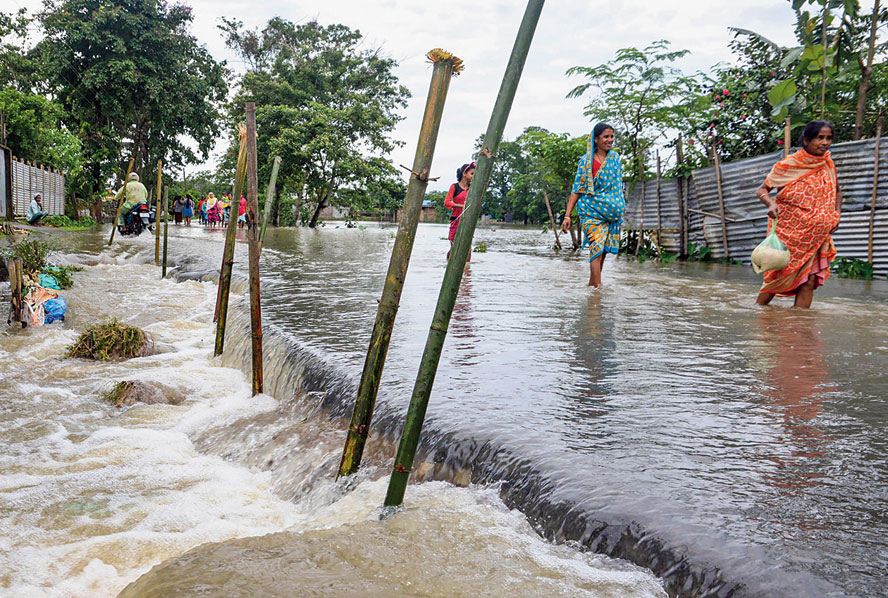The first wave of floods in Assam has created panic among paddy cultivators across the state.
Summer paddy cultivation usually starts in November and December and it is usually harvested in May.
According to the state agriculture department, paddy cultivation in around 130 hectares has been damaged in Nagaon district alone, and this may increase if floods reach new areas.
‘There is no option open before us. Farmers do not have an alternative as this is the time to harvest. We are just assessing the loss and will report the government for any possible support,” said Nagaon agriculture officer Ashok Borthakur.
The first wave of floods has hit most of the summer paddy zones in the state, which include Nagaon, Morigaon, Goalpara, Dhubri, Sonitpur and Darrang.
With more than 70,000 hectares under cultivation, the two districts of Nagaon and Morigaon together have the largest area under summer paddy cultivation in the state.
“Unlike other years, we did not get the time this year for smooth work. No rain at the beginning, specially during the transplantation stage, coronavirus-induced lockdown leading to failure in purchasing fertilisers and finally the floods before the monsoon have hampered our cultivation,” said Abdul Jalil, a farmer at Kampur.
According to official records, summer paddy is cultivated over four lakh hectares in the state. Dhubri district has the highest 53,000 hectares under paddy cultivation, followed by Nagaon. Dima Hasao district cultivates no summer paddy. The state government estimated around 11 lakh metric tonnes summer paddy production this year. Assam’s summer paddy productivity is around 2,242kg per hectare.
An agriculture department source said on Wednesday that the estimated production might come down this year because of the floods, but it was yet to assess the losses.
“The loss of summer paddy should be made up by autumn cultivation. For that farmers will be assisted in every possible way. We might prepare a strategy so that our farmers can produce a bountiful autumn paddy,” said another source.










